Excerpts from Jim Conrad's
Naturalist Newsletter
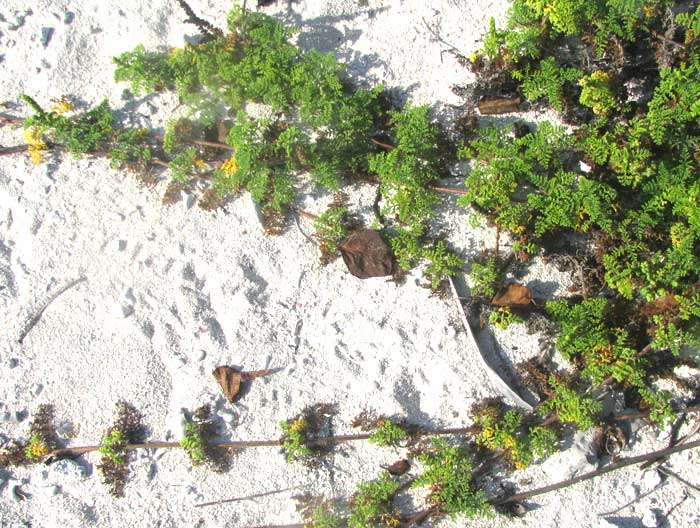
from the May 15, 2011 Newsletter issued from Mayan Beach Garden Inn 20 kms north of Mahahual; Caribbean coastal beach and mangroves, ~N18.89°, ~W87.64°, Quintana Roo state, MÉXICO
BEACH SNEEZER
One of the most common, distinctive plants on the low, narrow sand ridge I live on between the sea and the mangroves is the ferny-leaved, scrambling vine seen above.
The twice- and thrice-pinnately compound leaves are about 1.3 inches long (3cm). The sprawling plant's stems reach eight feet or more. Before seeing the flowers I guessed that the plant was something like a sand verbena, but the first view of some flowers revealed that I was way off. Do the plants' pagoda-like racemes of flowers tell you who the plant is below?
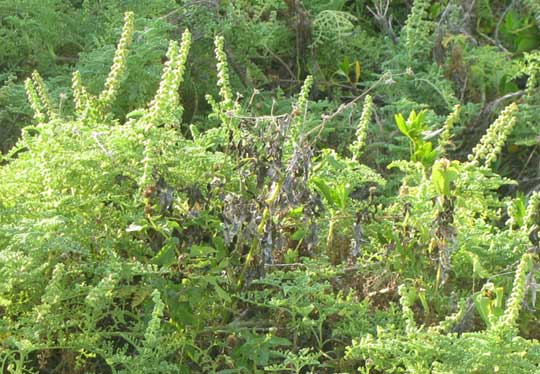
A close-up of two nodding flower heads at the top bearing nothing but male flowers, and a cup-like head at the base bearing only three or so female flowers, is shown below:
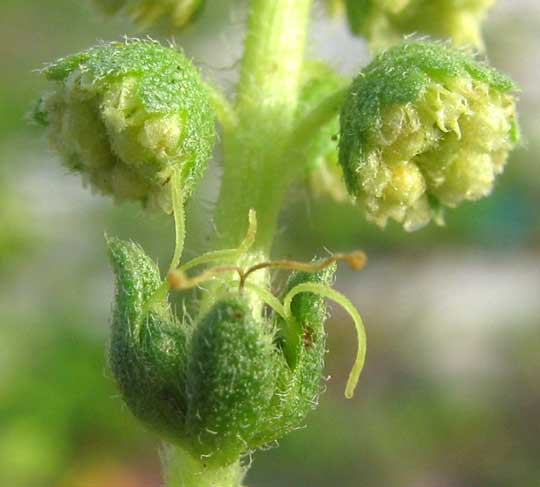
It's a ragweed! It's the Coastal Ragweed, AMBROSIA HISPIDA, belonging to the same genus as the North's sneeze-causing ragweeds, and thus a real ragweed.
The Pollen Library at http://www.pollenlibrary.com rates Coastal Ragweed as a severe allergen. This probably explains why Doris, one of our employees here, always gets irritated eyes and the sniffles when she comes to work, but her symptoms diminish when she returns home away from the beach.
Still, Coastal Ragweed has its virtues. It's a wonderful sand stabilizer. All along our sand ridge where developers have scalped this and other native plants from their lots, sand habitually streams across the road, sometimes so deep that it forms ripples. A bike running through it can be thrown over. A picture shot across nearly the entire width of our little sand ridge between the ocean and the mangroves, showing a real-estate-scalped lot about 95% covered with Coastal Ragweed (the Caribbean prettily visible in the back), is below:
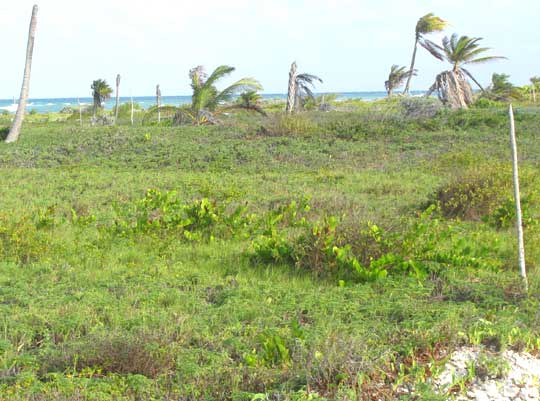
In that picture, the mound up close is where they've graded the sand back, after it'd formed dunes on the road. Besides holding our sand ridge together, Coastal Ragweed's leaves are just pretty, as shown close-up below:
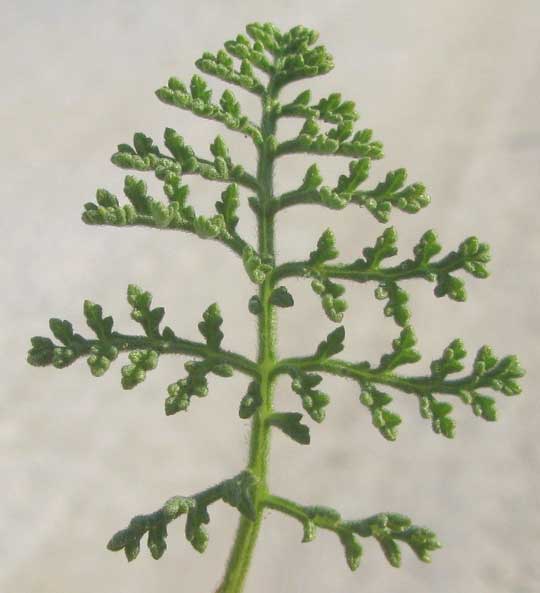
Also the leaves are fragrant in a medicinal sort of way. A reminiscing lady on the Internet recalls from her childhood days in Barbados: "On days and nights when the sea would be raging and the waves crashing down that smell would saturate the sea air and eventually became hardwired in my brain."
In Belize just to our south Coastal Ragweed is called Bay Geranium. A website based there reports that the plant can be made into soap and used to relieve itching skin, as well as for indigestion. However, it's mainly used for the common cold in the form of a strong tea made with lime and salt.
Coastal Ragweed is found along coastal Florida, the Bahamas, Mexico and Central America.